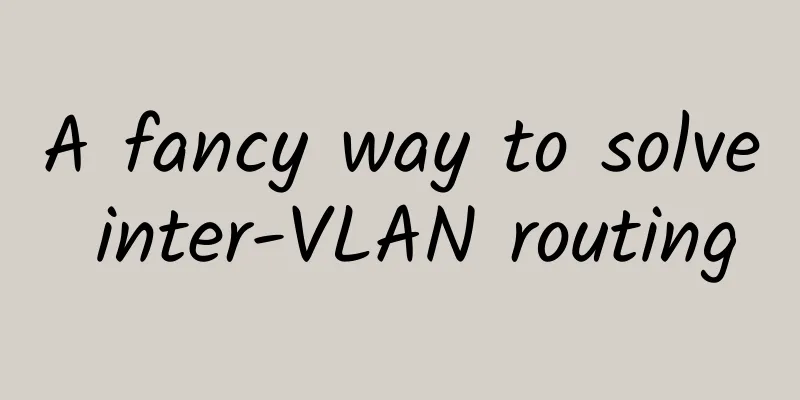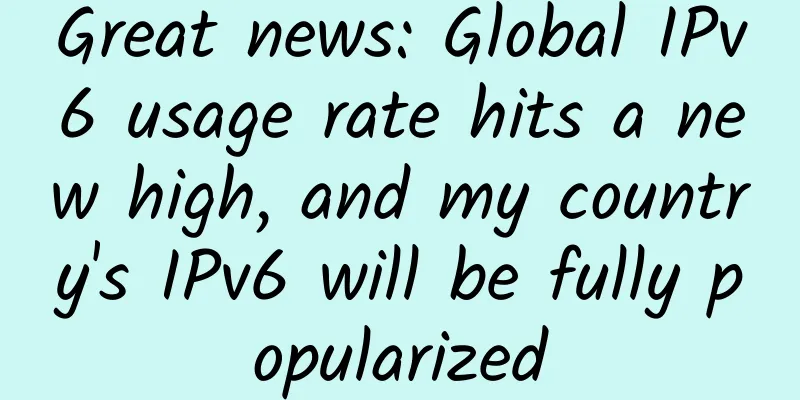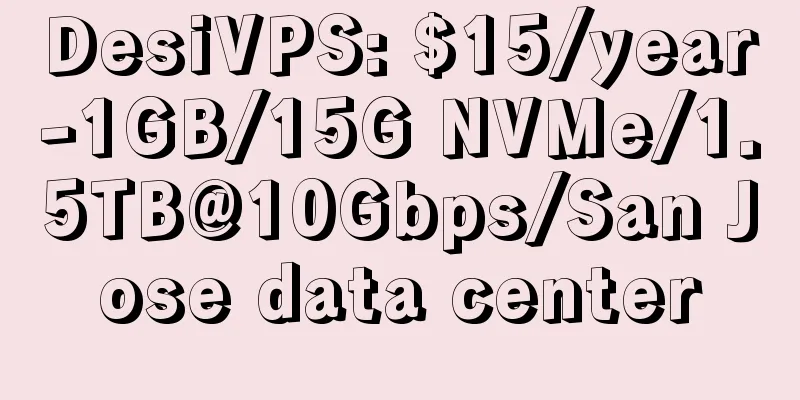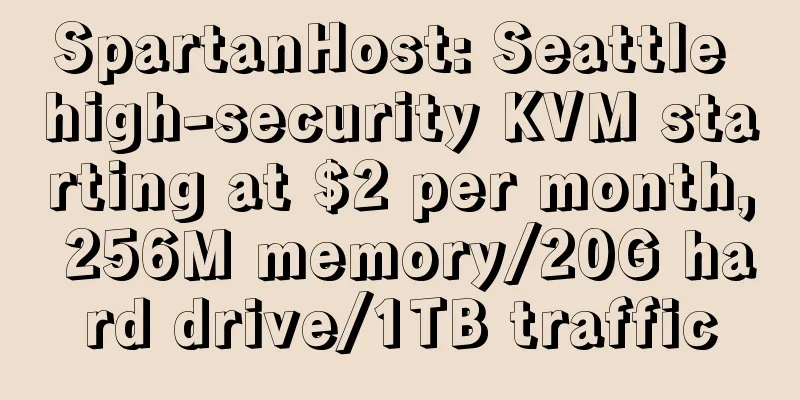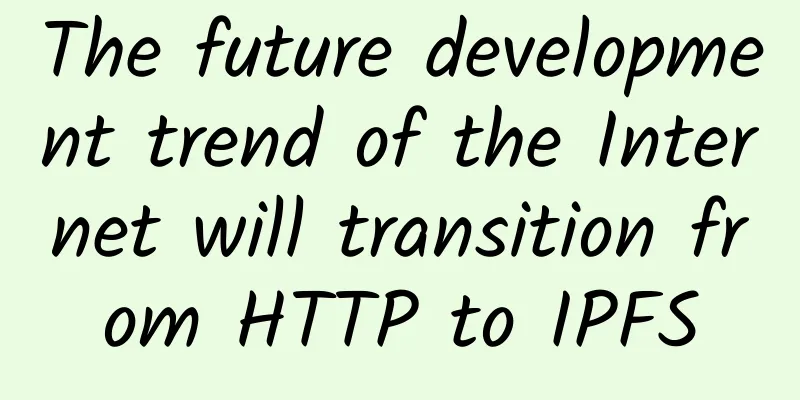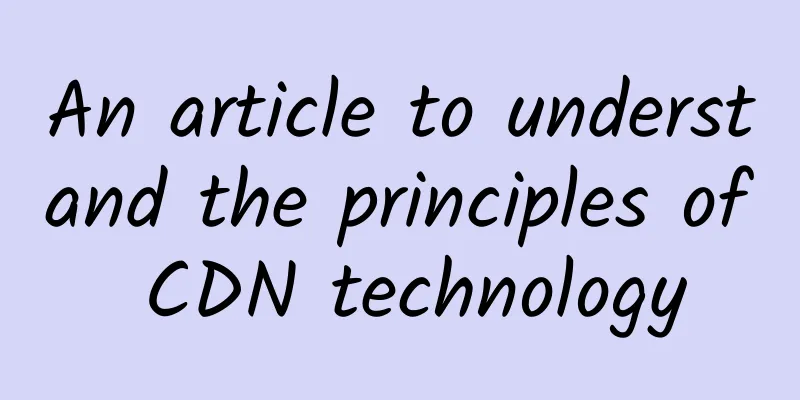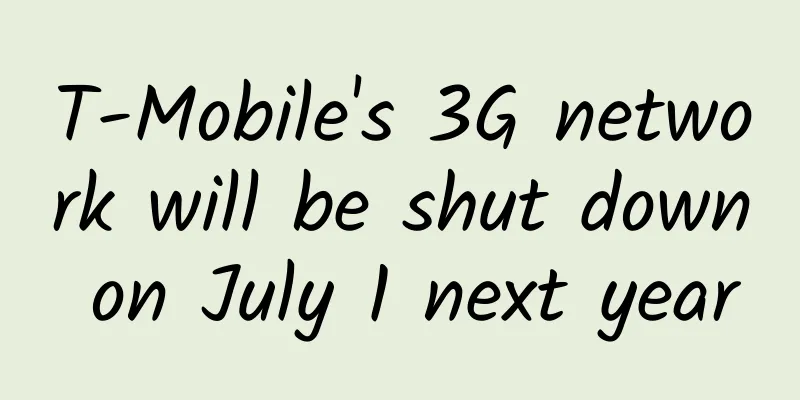5G message is coming, please check!
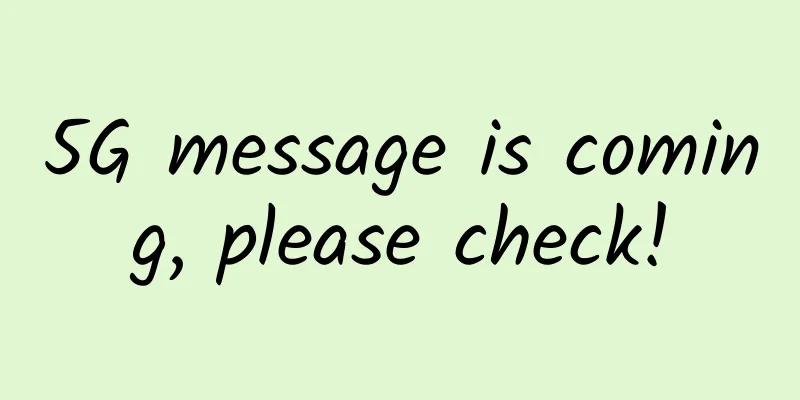
|
What is 5G messaging? Is it an upgraded version of SMS? What is the difference between it and WeChat? In fact, 5G messaging is not just an upgraded version of SMS. So, what changes can 5G messaging bring to social interaction? What progress has been made in the commercial use of 5G messaging? Let’s take a look together. What is 5G messaging?Many people have heard of 5G messaging, but don't know what it is specifically. According to the general definition, 5G messaging is a basic telecommunications service built on the GSMA RCS UP standard to achieve multimedia and lightweight messaging, as well as industry information interaction upgrades through the introduction of MaaP technology. In short, 5G messaging is not only a comprehensive upgrade of SMS services, but also a concrete practice of 5G redefining human-computer interaction. Users can complete one-stop business experiences such as service search, discovery, interaction, and payment in the message window. It is a new information service portal. How will 5G messages be presented?Using 5G messages, governments and enterprises can deliver public and commercial services directly to end users, and users can also search and select services in a similar way to an app store through the catalog service function of 5G messages. These public and commercial services are presented on the user's message interface in the form of rich media messages and interactive cards, and users can communicate with service providers or select services at any time. Specifically, 5G messages support a variety of media formats, including text, pictures, audio and video, emoticons, locations, and contacts, etc. They support online and offline messages, and can provide users with message status reports and message history management. In terms of the messaging function between individual users, 5G messaging includes point-to-point messaging, group messaging, and group chat functions, which can all be realized; in terms of the messaging function between industries and individual users, 5G messaging allows industry customers to interact with individual users through the operator network in the form of Chatbot. What is the difference between 5G messages and SMS?5G messaging service upgrades SMS service in a terminal native way while maintaining users' original communication habits and fully inheriting the number system, real-name system, security, interconnection and telecom-level service quality of telecommunications services. 5G messaging service integrates multiple media and message formats and can be seamlessly integrated with traditional SMS. 5G messaging service uses artificial intelligence, cloud computing and big data capabilities to provide users with efficient intelligent services to meet users' rich information communication needs and diversified service needs. In addition, unlike existing instant messaging apps, 5G messaging is not only a comprehensive upgrade of SMS capabilities, but also uses mobile phone numbers as user IDs. Users no longer need to install apps or add friends to exchange messages. It supports the function of converting messages to SMS. When the recipient does not support 5G messaging, it can be converted to SMS and sent to the recipient. You don't need to follow the company number to send and receive messages. What are the technical requirements for 5G messaging?In terms of terminals, they should support GSMA RCS Universal Profile v2.4, and the terminals should be able to upgrade according to subsequent standard evolution. The terminals should support personal and industry messaging functions in 5G messages, including but not limited to configuring service access points, network parameters, and service parameters according to the configuration files issued by the access operator network; performing security authentication with the network based on SIM card information; supporting the reception, display, and processing of rich media card messages from Chatbot, etc. At the network level, in addition to supporting GSMA RCS Universal Profile v2.4 and its subsequent upgraded versions, the operator network should also be able to provide a unified terminal-network interface for terminals to ensure that the terminals can use the 5G messaging function normally after accessing different operator networks; provide a unified Chatbot interface for industry customers to ensure that industry customers' Chatbots can access different operator networks in the same way, etc. Li Beilin, deputy secretary-general of the China Communications Enterprise Association, said that 5G messages, as an important part of the 5G ecosystem and digital economy, carry the important mission of transforming and upgrading traditional SMS services. On April 8, 2020, China Telecom, China Mobile, and China Unicom, the three major operators, jointly launched the "5G Message White Paper" for the first time. The concept of 5G messages began to be known by the industry and the general public, and quickly became a weather vane for SMS services in the 5G era. Fu Guoqiang, an expert at the Institute of Technology and Standards of the China Academy of Information and Communications Technology, believes that the driving force behind users' 5G messages is that users no longer need to frequently install APPs. "Users can easily search and select from one entrance and in a unified interface. For example, in the application of train ticket booking, we can easily implement ticket booking services in the SMS chat box to solve the problem of buying tickets." What does 5G messaging look like?It has been a year and a half since the three major operators jointly released the "5G Message White Paper" in April last year. Recently, the three major operators have successively announced the launch of 5G message trial commercial use. In the past period of time, some 5G message applications have been implemented in vertical industries, bringing a new experience to users. What does 5G message look like? Let's take a look. In January this year, at the government service hall in Nanshan District, Shenzhen, Ms. Ran, who came to handle the procedures for talent housing subsidies, was the first to experience the improvement in service efficiency brought by 5G messages. Nanshan's "Government Service 5G Message" upgrades the one-dimensional text messages based on text to a rich media interactive interface, showing more friendly, more intuitive and more specific government services. Compared with traditional fragmented and fragmented government service text messages, Nanshan's "Government Service 5G Message" integrates the entire process of user services, allowing users to enjoy appointments, applications, number collection, inquiries and other services by directly interacting with messages. Based on the mobile SMS ecosystem, there is no need to download and follow, a "5G message" can handle routine government services and improve users' ability to quickly obtain effective information. On December 21, at the "Micro-Government Sichuan-2021 Government New Media Integration Development Conference", with the sound of SMS reminders, "Sichuan Releases 5G Messages" was officially launched. On that day, three 5G messages were pushed to the audience's mobile phones in turn. Unlike the traditional SMS interface, 5G messages display rich pictures and videos, and can be interacted in real time. This special and fun visual presentation and interactive experience made the audience feel particularly fresh. On December 22, under the guidance of the Sichuan Administration of Giant Panda National Park and the Nature Conservancy, Sichuan Mobile, ZTE and Dahan Santong jointly announced that the world's first 5G messaging application for giant panda protection - Panda's Coming was officially released and officially applied in the Deyang Management Bureau of the Giant Panda National Park. Through the "Forest Protection Action" function of 5G messages, forest rangers can complete daily tasks such as real-time transmission of panda monitoring data, patrol punch-in, patrol alarm, etc., improve patrol efficiency and reduce the workload of forest rangers. Customers can participate in online interactions on giant panda protection through the short message interface of their mobile phones, such as knowledge popularization, panda live broadcast, virtual cultivation game interaction, etc., which can attract more people to pay attention to the protection of biodiversity represented by giant pandas, further broaden the information dissemination channels of giant panda protection and enhance cultural influence, and achieve common attention from the whole society. 5G messages are connected to the pilot of the Giant Panda Breeding Research Base to explore new models of eco-tourism and publicity and education in tourist open areas; they are connected to the base's tourist services and operator group label data to provide intelligent tour guide tool services, including capacity measurement, scenic spot reservations, route planning, voice explanations and other types of autonomous immersive interactive experiences. In the later stage, it will be applied to the Giant Panda National Park to help it better play the scientific research, education and recreation functions of the national park, realize digital innovation, and further explore the natural ecological and cultural value of the national park. As the official communications service partner of the Beijing 2022 Winter Olympics, China Unicom has created and released an ice and snow-themed 5G message Winter Olympics application, and launched three service sections: Winter Olympics services, communications services, and Fun Winter Olympics. Users can not only watch the live broadcast of the Winter Olympics events and capture the wonderful moments of the Winter Olympics, but also purchase and redeem "Bing Dwen Dwen" necklaces, "Shuey Rhon Rhon" necklaces, Winter Olympics emblems, stamps, badges and other Winter Olympics souvenirs and Winter Olympics peripheral products. Today, 5G message applications have covered multiple fields including government affairs, education, medical care, travel, express delivery, media, culture and tourism, finance, consumption, etc. With the continuous advancement of the national trial commercial use of 5G messages, it will definitely bring us more new experiences and improve the efficiency of information acquisition. Ready! 5G messaging commercial trials speed upRecently, at the 2021 China Value-Added Telecommunications and Virtual Operator Summit - 5G Message Summit, Miao Jianhua, President of the China Communications Enterprise Association, stated that 5G messages are expected to become the first batch of 5G applications for public users. In April 2020, the three major operators jointly released the "5G Message White Paper", which attracted widespread attention. At present, the three major operators are actively promoting the trial commercialization of 5G messages. China Telecom has completed the construction of the 5G message platform, and is currently preparing to launch the national trial commercialization of 5G messages; China Mobile has built a platform for the entire network in eight regions and a 5G unified message platform, and has started the second phase of planning; China Unicom recently released the 5G Message Zhixin Sailing Plan, launched the 5G Message Winter Olympics application, and will continue to promote 5G messages in the future. The development of technology standardization, application scale, scenario diversification, interactive intelligence, and value win-win. The three telecom operators have successively announced the launch of the trial commercialization of 5G messages, marking that my country's 5G messages have entered the commercial preparation period from the design and construction period, and 5G messages have shown a good development trend. However, the current domestic 5G message development is in its infancy and faces many problems. First, there are relatively few terminals that support 5G message services, and many terminal manufacturers lack the enthusiasm to participate in the promotion of 5G messages; second, there are problems with the interconnection of 5G message services, and operators have not yet reached a consensus on the operation mode of 5G message services, which is a key point that affects the formation of synergy of 5G messages; third, there are relatively few 5G message application demonstrations, and the public perception is insufficient; fourth, the planning for the orderly and standardized development of 5G messages needs to be further improved, and the regulatory model and technical means, especially the relevant technical means of security prevention, need to be further strengthened. Regarding the development of 5G messages, experts suggest that the 5G message working group should quickly explore and solve the bottlenecks and key issues that restrict the development of terminals in a targeted manner to promote the rapid development of 5G terminals; further standardize the 5G message standards, form an industry consensus, and promote the collaboration of 5G message services. It is recommended that the 5G message working group explore the 5G message standards, further develop the existing framework into a group standard, announce it to the public to form an industry consensus, and then make further efforts to make the group standard an industry standard; determine the 5G message operation model as soon as possible, and coordinate operating companies to establish an effective cooperation model. On this issue, the China Communications Enterprise Association and the 5G Message Working Group should build a platform for communication and exchange between operators and related companies, so that everyone can reach a consensus and find an acceptable and recognized path and method in the operation model, cooperation model, and business model as soon as possible to form an industry joint force. In addition, it is necessary to accelerate the progress of 5G message pilot demonstrations, enhance public awareness, and promote the deep integration and development of industry scenarios and 5G messages; further carry out regulatory policy research, improve and perfect prevention technologies and means, and ensure that 5G messages can develop in an orderly, standardized and healthy manner from the beginning. This year is a critical year for the trial commercialization of 5G messages. The upstream and downstream of the industry chain are working together to build a 5G message ecosystem with network interconnection, business interconnection, terminal sharing, and consistent experience. The CCSA official website shows that the "5G Message Security Technical Requirements" have been officially submitted for approval and public announcement. The document stipulates the security technical requirements for terminals that support 5G message services and various network elements of the system. The business includes personal messages and industry messages. 5G messages will become a basic communication service that supports multiple terminals and empowers multiple industries, helping 5G to flourish. 5G messaging is here. What will it change for us?On December 3, 1992, Papworth, a software engineer at Vodafone, a British telecom operator, sent the world's first text message, "Merry Christmas", using Vodafone's GSM network. In the years after the first text message was sent, portable phones developed rapidly, and mobile phones gradually entered the daily lives of more and more people. As a basic function of mobile phones, text messages are popular among users. Through mobile phone text messages, people can send text chats, convey blessings and thoughts, and even vote for their favorite idols in the talent show. I believe everyone still remembers the grand occasion of 9 million text message votes for "Super Girl" in 2005. Time flies, technology changes, and with the advent of the Internet era and the rapid rise of smartphones, text messages seem to have gradually faded out of our lives. On January 21, 2011, WeChat released the 1.0 beta version for iPhone users, and it quickly became popular and developed into a national social application. In the 4G era, the social function of traditional mobile phone text messages has been replaced by WeChat, and its biggest function at present is probably to receive verification codes and express delivery pickup codes. The arrival of a new era always brings a lot of changes. Entering the 5G era, mobile text messages seem to have ushered in the dawn of change and upgrade. In April 2020, the three major operators jointly released the "5G Message White Paper" to comprehensively upgrade and transform text messages. According to the "5G Message White Paper", the 5G message service upgrades the SMS service in a terminal native way while maintaining the user's original communication habits and fully inheriting the number system, real-name system, security, interconnection and telecommunications-level service quality of the telecommunications business. The 5G message service integrates a variety of media and message formats, and can be seamlessly integrated with traditional SMS. The 5G message service uses technologies such as artificial intelligence, cloud computing and big data to provide users with efficient and intelligent services that can meet users' rich information communication needs and diversified service needs. 5G messaging is coming. What changes will it bring to us?5G messaging brings a new service mode. Enterprises can provide personalized services and consultations to users through rich media such as text, voice, and tabs. The high speed and low latency of 5G enable mobile short messages to accomplish tasks that were originally done with mobile clients, covering a wide range of markets such as chat customer service, online shopping, short video marketing, and precise interaction. 5G messages are more convenient and safer. In the operating environment of 5G messages, users do not need to download a large number of mobile clients, and can perform various operations directly through the native message portal. 5G messages realize "information as a service", which is a good opportunity to provide convenient information services for the elderly who are not familiar with the operation of smartphones. According to the "5G Message White Paper", the operator network should support the shielding of industry customer spam information reported by the terminal. In addition, 5G messages also support information interaction methods such as encrypted transmission and graphic passwords, which can provide information security and protect user privacy. Therefore, industry experts believe that compared with traditional SMS, the situation of spam and advertising messages in 5G messages may be improved. At present, the development of domestic 5G messages is still in its infancy, and problems such as insufficient number of terminals and poor service experience still exist. However, with the continuous improvement of the industry's development foundation and the continuous advancement of terminals, standards, and demonstration pilots, we look forward to 5G messages bringing us more high-quality service experience in the future. |
<<: Five trends in edge computing for 2022
>>: US telecom companies agree to delay 5G deployment
Recommend
Video websites in Europe reduce bitrates to ease the burden on broadband operators
During the epidemic prevention and control period...
Brief discussion: What is cloud network?
The future of cloud is bright. By 2024, more than...
Japan's largest operator stops NB-IoT services, a new round of industry "reshuffle" is coming, who will be next?
On March 30, NTT DoCoMo, Japan's largest tele...
A Preliminary Study on Software Defined Network (SDN)
【51CTO.com Quick Translation】Before 2008, the ent...
CAICT's first batch of AIOps systems and tools evaluations, Borui Data was rated "comprehensive" for anomaly detection module
Recently, Swift-AI, the intelligent operation and...
Data centers need to speed up and improve quality to cope with changes through innovation
2020 is a critical year for the large-scale const...
In the Internet age, do you know where your WiFi comes from? See the four working modes of WiFi module
The four common working modes of WIFI modules: tr...
Yu Xin: What does ofo want to do?
[51CTO.com original article] The 16th China Inter...
WebSocket in real-time chat room
To learn more about open source, please visit: ...
Fiber pre-entry: A new strategy to accelerate FTTH deployment
With the progress and development of human societ...
If you don’t know IPv6, you are out of date. What is IPv6?
When using mobile apps, have you noticed that the...
Six free network latency testing tools worth recommending
As a network administrator or network engineer, i...
2021 Apps UP Competition | Huawei Chen Lifang: The stars will never fade, let’s walk hand in hand
[Beijing, June 10] The 2021 Huawei HMS Global App...
Innovative ICT to build a smart airport
In the era of globalization, airports have become...
5G infrastructure scale leads the world, accelerating the implementation of 5G applications is the key to future development
After more than a year of commercial use, China h...

